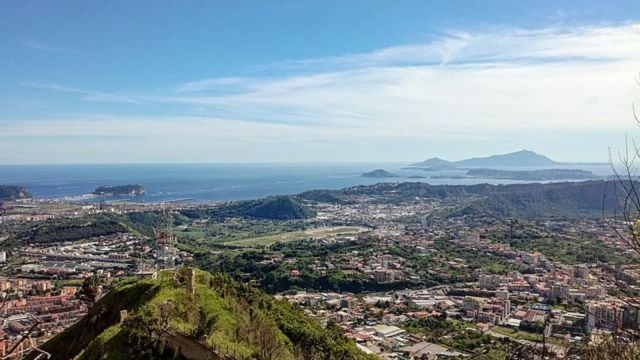Stay updated with the latest - Click here to follow us on Instagram
Europe’s most dangerous volcano stirs, Italians weigh the risks
The ground in Phlegraean Fields is rising by 2 centimeters each month, causing the water level at local docks to drop.
 Despite the growing danger, many residents continue with their daily lives. (Wikimedia Commons photo/ Representational)
Despite the growing danger, many residents continue with their daily lives. (Wikimedia Commons photo/ Representational)In Italy’s Phlegraean Fields, Europe’s most dangerous volcano is becoming active again, causing fear and debate among locals and scientists. This volcanic area near Naples is seeing an increase in earthquakes and rising ground levels, making people worry about a possible eruption that could devastate the region.
The Phlegraean Fields, a large volcanic area with many craters, have been restless for months. The ground is rising by 2 centimeters each month, causing the water level at local docks to drop. Thousands of small earthquakes, including one that forced 1,500 people to seek temporary shelter, have frightened coastal communities.
How dangerous could be an eruption?
About 80,000 people live in this area, known for its sulfuric air and beautiful views of Capri and Ischia. Despite the growing danger, many residents continue with their daily lives—cooking, playing soccer, and going about their routines. But the threat is always in the back of their minds, and some experts are urging people to think about leaving before things get worse.
Giuseppe Mastrolorenzo, a senior researcher at Italy’s National Institute of Geophysics and Volcanology, has been outspoken about the risks. He warns that pressure beneath the ground could build up and release suddenly, leading to a catastrophic eruption that could cover Naples in ash and dangerous materials. Mastrolorenzo believes the situation is serious enough to start planning evacuations.
However, not everyone agrees with him.
Overstated warnings?
Some officials, including Pozzuoli’s Mayor Luigi Manzoni, think Mastrolorenzo’s warnings are too extreme. They argue that while the threat is real, it is manageable, and there is no need for large-scale evacuations. The national government has sent mixed messages, placing a temporary ban on construction while also supporting a major redevelopment project in the area.
The Phlegraean Fields last erupted in 1538, creating a crater lake that still exists today.
Although there are no clear signs of magma rising quickly to the surface, the situation is unpredictable, and experts are divided on how much time residents would have to evacuate if a major eruption occurs. The 1538 eruption gave people days, even weeks, to leave, but some fear that a future eruption could happen with little warning.
Recent earthquakes have already caused damage in the area. In May, a 4.4 magnitude quake forced the evacuation of schools, a prison, and over 100 families. Buildings that were strengthened in the 1980s are now starting to crack again, and residents are becoming more anxious.
Local citizen groups are asking for more action from the government, accusing officials of downplaying the threat to protect the economy. Tourism has declined, businesses are struggling, and some people are beginning to question whether they should stay or leave.
(With inputs from The Washington Post)



- 01
- 02
- 03
- 04
- 05




























